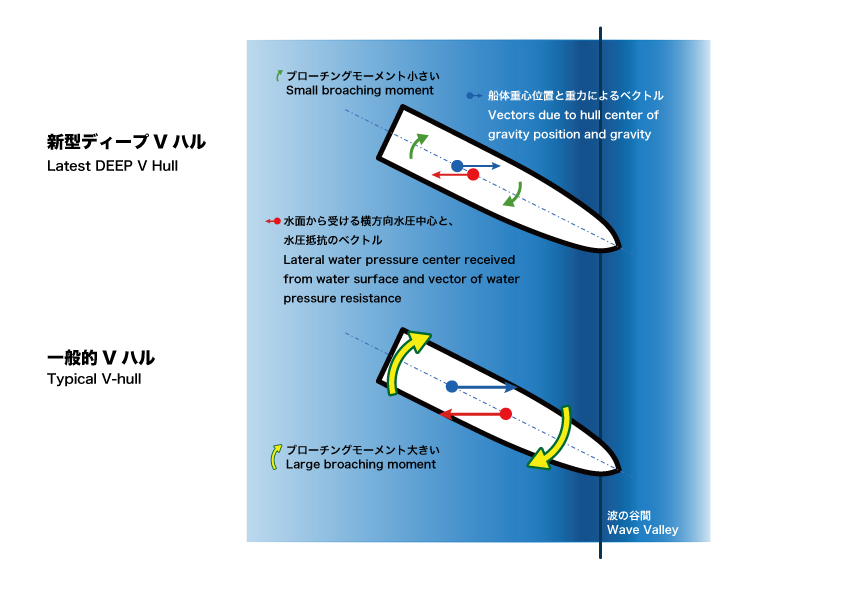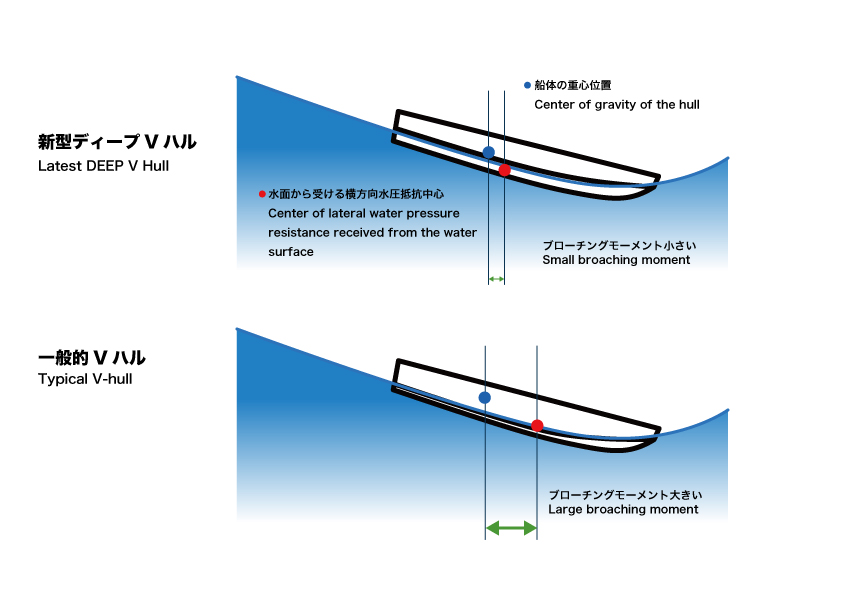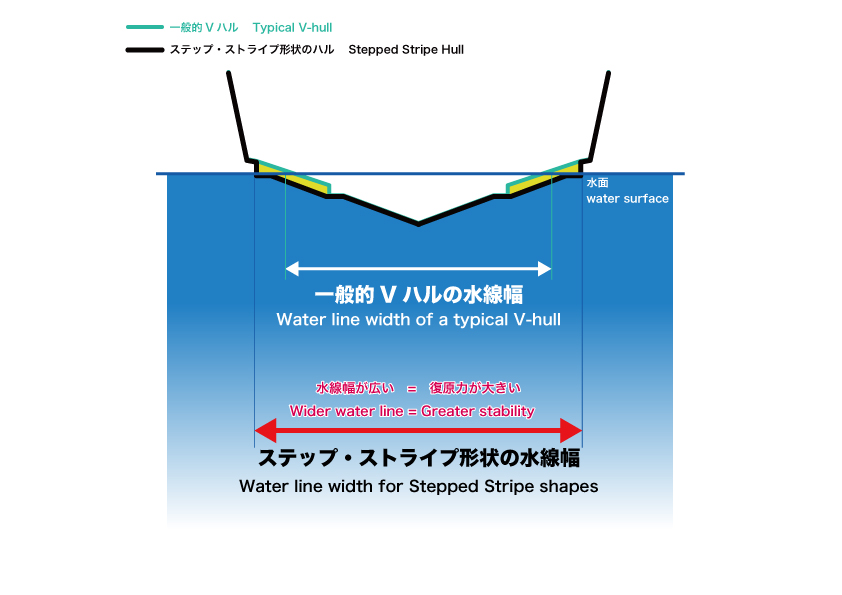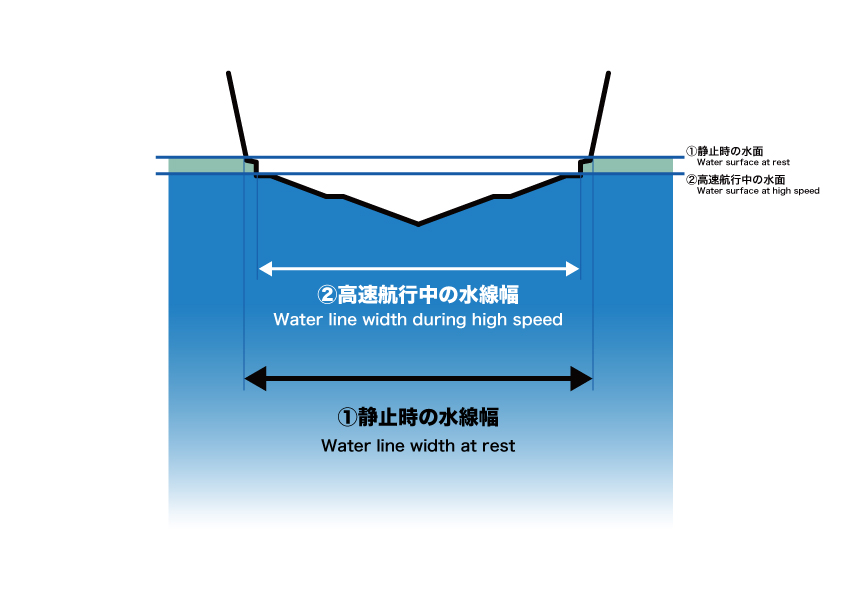The Latest Deep V Hull
The aim and effect of this hull shape
NJM decided to use a V-shaped hull instead of a catamaran, which is our specialty. The hull is 33.5 feet long, which is large enough to provide great stability and space utility. In addition, a deep-V shape (stern deadrise, about 20 degrees) was adopted to ensure comfort and stability at high speeds. In recent years, outboard motors have become larger and higher horsepower, and we made sure that up to three outboard motors can be installed.
The stem (bow) above the chine is deliberately made to stand upright to secure a large waterline length in relation to the overall length of the boat, which improves running stability, course keeping performance, and resistance to bow drift in crosswinds.
Deep V Hull
High performance on wavy sea surface by deep V-hull
Compared to the shallow V-hull of a typical fishing boat*, the new deep V-hull provides better cushioning during navigation, more comfort and better navigation efficiency. However, the most important thing for us is safety, and we have developed the new deep V-hull with safety as the first priority.
One of the most important characteristics of the new boat is its dramatically improved resistance to broaching (a phenomenon in which a boat becomes unmaneuverable due to the force of large waves, and continues to turn and slips and drifts) caused by following waves when the sea surface is rough. Small boats with shallow bottom V-angles tend to have the center of lateral water pressure resistance located relatively close to the bow, so they are prone to broaching in high waves, and in the worst case may capsize.
The broaching phenomenon is caused by the vector of the hull center of gravity and the gravity vector, and the vector of the lateral water pressure center and the water pressure resistance received from the water surface. In the new deep-V hull, the hull design has been reviewed so that the distance between the center of gravity and the center of water pressure resistance is relatively small, and the optimal hull shape has been developed based on many years of experience. Translated with www.DeepL.com/Translator (free version)
Of course, there is no such thing as a boat that does not broach at all, so safe navigation by the operator is a prerequisite. In particular, when installing a large horsepower engine, it is essential to take safety into consideration when operating the boat.
*in this company's comparison
Stepped Stripe
Stepped stripe shape for improved lateral stability at low and medium speeds
A stepped stripe shape has been adopted for the new hull shape. The new hull has a stepped stripe shape, which provides a high initial recovery force and outstanding stability, especially during low-speed navigation and when stationary.
In the case of the Stepped Stripe, the waterline width (the width of the plane cut by the water surface) is wider than the waterline width of a typical V-shaped hull. Since the strength of stability on stationary water surface is proportional to the cube of the water line width, the lateral stability at low speed as well as at rest is definitely increased.
Double Chain
Improved stability at rest with Double Chain
The double chine is a conventional method to improve static recuperative power by narrowing the waterline width at high speed and widening the waterline width at rest. It is the most suitable hull form for reducing drag at high speed and improving both lateral stability at rest.
Based on safety, NJM has developed the most suitable hull form for the plan by skillfully combining old basic techniques and new technologies, taking into account various factors such as the overall length of the ship and the position of the center of gravity. This is a master craftsman's technique that can only be created by having been involved with ships for a long time in Japan, which is surrounded by rough waters. We will continue our research and development every day to make your marine life more fulfilling, safe, and comfortable.



